Sous Vide Cooking has interested me for a few years now.
Talk about a learning curve! When I saw the Sous Vide Supreme come out last fall, I was excited. When I heard that Heston Blumenthal was on a US tour promoting it, I was hooked. After eating at The Fat Duck I was more curious than ever. When the opportunity to take on a machine for two weeks and try it out presented itself to me, I was very eager (but I did not jump up and down…. at least in public)! But, I have been reading and learning non-stop since.
The machine arrived accompanied with the manual, seasoning packets, and a vacuum machine for packaging the food. Beavie and I were so excited! I have it for two weeks and will use it and review it throughout the next two weeks. First, a bit of theory: What is Sous Vide? According to Douglas Baldwin, Sous vide is French for “under vacuum” and describes a method of cooking in vacuum sealed plastic pouches at low temperatures for long times. He believes that with the proper equipment and some basic knowledge, anyone can prepare consistently delicious and safe food.
This is the concern of our local Health Inspectors in Edmonton: the safe preparation of food using the sous vide cooking method. That is why we haven’t any restaurants in the city doing any sous vide cooking. In a future post, I hope to interview my health inspector so that he can clearly express his concerns about sous vide cooking from his perspective. For now, with the information I have from my readings, and from my food safety training, I am confident that the process is safe, but not without careful knowledge, training, and precaution.
I decided to start with something simple: Duck Confit.
I used Douglas Baldwin‘s recipe. I have made duck confit the traditional way several times, and The French Laundry way once though I have posted neither. I will do so, soon. I found soaking the duck ina 10% salt water solution quite different, yet very effective for this recipe.
I buy my duck legs from Greens Eggs & Ham at the City Market (every Saturday throughout the summer). I chose to use my Thermomix to make the 5% salt water solution because is was easiest. It is certainly not necessary. I had 2 litres of water to 100 grams of kosher salt, several sprigs of time and some slivered garlic.
I gave it all a whirl to mix up the salt mix in the herbs and garlic. The four duck legs went into the brine and I placed a plate on top and left them there for 3 hours.
The shrivelled chubby legs come out of the bath and got a good wash and dry to get as much of the salt off as possible. Each leg was then seasoned with salt and pepper and put into a vacuum bag with 3 tablespoons full of duck fat (also available from Greens Eggs & Ham).
I discovered through my research that seasonings are not the same when going through the sous vide method, and that one has to experiment quite a bit to find what works well. Garlic doesn’t work well, but garlic powder does, according to Douglas Baldwin. Olive oil undergoes a change through the slow and low heat process that can offer an acrid flavour to food. So, I kept it simple. Salt and pepper: not too much.
I used my Food Safe machine as we quickly discovered that the one that accompanied the sous vide machine didn’t work. Or, we couldn’t get it to work. But, don’t panic as the equipment I received is used. If you were to purchase from the company, your items would be new! Vacuum sealing reduces aerobic bacterial growth and allows for the efficient transfer of thermal energy from the water (or steam) to the food. Vacuum packaging prevents evaporative flavour and moisture loss during cooking and inhibits off-flavors from oxidation. This results in especially flavourful and nutritious food (Douglas Baldwin).
Once all four legs were vacuum packed, I placed them in the tray that came for the inside of the machine to ensure the food doesn’t float and is completely covered with water. I had filled the machine up to the “fill” mark with water and had it heating to the temperature of 176ºF. The video that came with the machine explained that the water level would increase as the food was put in, but that the food had to be completely covered (and the level could not exceed the “full” mark on the inside of the machine). It looked like it needed more water to cover these legs, so instead of having to add cold water to cover the legs, I chose to fill the machine with more water, but not to the “full” mark. I could remove some water, if necessary, and that seemed better than adding cold water to the mix. It took about 30 minutes to reach temperature and was ready once we had all of the meat washed, dried, seasoned and bagged.
I immersed the tray holding the duck into the water, and it covered them all just reaching the “full” mark. I was so glad I had added the extra water. I had read that I should have the temperature a little higher than needed as the mass of the duck would cool the temperature and then have to bring it up again. That did happen, but by only 2 .5 degrees and for about 7 minutes. So, I was pleased with that.
I left the duck in the machine for 10 hours and had the sink filled with ice and water to cool them down very quickly to minimize the risk of food pathogens. Douglas Baldwin’s research states that although pathogenic microorganisms can be controlled with the addition of acids, salts and some spices, sous vide prepared foods rely heavily on temperature control.
“The simplest and safest method of sous vide cooking is cook-hold””the raw (or partially cooked) ingredients are vacuum sealed, pasteurized and then held at 130°F (54.4°C) or above until served. While hot holding the food will prevent any food pathogens from growing, meat and vegetables will continue to soften and may become mushy if held for too long. How long is too long depends on both the holding temperature and what is being cooked; while tough cuts of beef can be cooked and held in a 130°F (54.4°C) water bath for 24″“48 hours, most food products can only be held for 8″“10 hours before becoming unacceptably tender.”
I was amazed at how wonderful the meat smelled. Into the ice bath until the fat solidified around the meat. The ice bath must be at least half ice. I used a big ice bag and then added water. It is important to follow the cooling time table (below the recipe) to avoid pathogens. The photos are deceiving as there was definitely half ice or more in my ice bath.
There is is (below, right). The notes on each bag are notes I made testing the vacuum bag settings: moist, dry, normal, high
And look at this beauty out of the bag. The jelly was luscious. YUM.
Into the hot skillet with the duck fat from the bag and the skin crisped up in no time. The meat was exceptionally tender, but not almost falling off the bone in the pan as it has been when I have made confit the traditional way. It was keeping its shape, yet unbelievably tender.
And what better way to test the sous vide method than to compare it with traditional cooking. I probably should have compared it to my traditionally prepared duck confit. Instead, I compared it to a leg of duck fried in the pan beside it, but for considerably longer (below, right). It also looks lovely. I guess I should confess what is fairly obvious here. I didn’t clean the leg to release the meat from the end before I began my fun. I have done that in one of my confit posts to come, and it is much prettier. I used elephant garlic chives purchased from Mona‘s at the City Market. (I had never tried them before, but they were delicious. Novel, pretty, and tasty: that’s a great combination.)
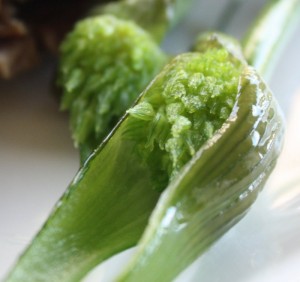 I was really suprised by the difference in texture and tenderness of the two legs. The sous vide leg was so succulent and tender and the other leg appeared tough. I was pleased with the brining of the sous vide leg as the flavour of the thyme and garlic scented the meat, yet there was not too much salt which has been a problem for me when I make duck confit using the tradtional method. The other leg had not been brined or seasoned, other than salt and pepper. It did have a really great flavour, but it was like comparing apples to oranges. The sous vide duck was definitely more tasty, so much more tender, and just leaps and bounds ahead of the other duck leg in flavour, taste, mouth feel, appearance, and even smell. Vanja thinks I am going a little far with the smell idea. He didn’t share that opinion with me.
I was really suprised by the difference in texture and tenderness of the two legs. The sous vide leg was so succulent and tender and the other leg appeared tough. I was pleased with the brining of the sous vide leg as the flavour of the thyme and garlic scented the meat, yet there was not too much salt which has been a problem for me when I make duck confit using the tradtional method. The other leg had not been brined or seasoned, other than salt and pepper. It did have a really great flavour, but it was like comparing apples to oranges. The sous vide duck was definitely more tasty, so much more tender, and just leaps and bounds ahead of the other duck leg in flavour, taste, mouth feel, appearance, and even smell. Vanja thinks I am going a little far with the smell idea. He didn’t share that opinion with me.
You can double click on any of the smaller photos to enlarge them to see the visual texture of the meat…
…or lack thereof…
So far, I am really excited about this first quest. I look forward to more! I was to have Lillian from Beyond Umami and her fiancé, Dan over on Sunday for some more trials, but I had to cancel due to … well, I had to cancel, so I hope they can come this weekend! I tweeted to all out there in Edmonton Foodie land to see who would be interested in participating in testing this machine with me. Thankfully, Lillian and Dan responded. I have so much for them to taste. We will cook together, too. Scallops, and hopefully, a Key Lime Pie!
Meanwhile, I have more to come…..soon.
Douglas Baldwin was only one reference, but I have found him an incredible one. If you are interested in Sous Vide cooking, check out his work.
Turkey, Duck or Goose Leg Confit Sous Vide Recipe
Ingredients:
- Duck, Goose or Turkey Legs
- Rendered Duck or Goose Fat (or Lard)
- Salt and Pepper
Instructions:
- Place legs in a 5 to 10% brine (50 to 100 grams salt per 1 liter) for three to six hours: I chose a 5% solution for three hours.
- The brine may be flavoured with sprigs of thyme, bay leaves, garlic, and orange/ lemon slices: I chose thyme and garlic
- After brining, rinse legs and pat dry with paper towels: I use tea towels and really washed and dried well
- Season with Kosher salt and coarse ground pepper
- Individually vacuum seal the legs with 2to 4 tablespoons of rendered fat: I used 3 tablespoons
- Place the vacuum sealed legs in a 176°F (80°C) water bath for 8 to 12 hours: as I was going to the Market Saturday morning, they were out in 10 hours
- After cooking, the legs must be rapidly cooled in ice water (see table below) and can be then frozen or refrigerated at below 39° indefinitely
- To serve, reheat and sear until skin is crispy or just discard skin and serve meat torn into pieces
| Thickness | 131°F | 141°F | 176°F |
| mm | 55°C | 60.5°C | 80°C |
| 5 | 1 | 1 | 1 |
| 10 | 4 | 4 | 5 |
| 15 | 10 | 10 | 11 |
| 20 | 17 | 18 | 20 |
| 25 | 27 | 28 | 30 |
| 30 | 38 | 40 | 43 |
| 35 | 52 | 54 | 59 |
| 40 | 1:07 | 1:10 | 1:17 |
| 45 | 1:25 | 1:28 | 1:37 |
| 50 | 1:45 | 1:49 | 1:59 |
| 55 | 2:07 | 2:11 | 2:24 |
| 60 | 2:30 | 2:36 | 2:51 |
| 65 | 2:56 | 3:03 | 3:21 |
| 70 | 3:24 | 3:31 | 3:53 |

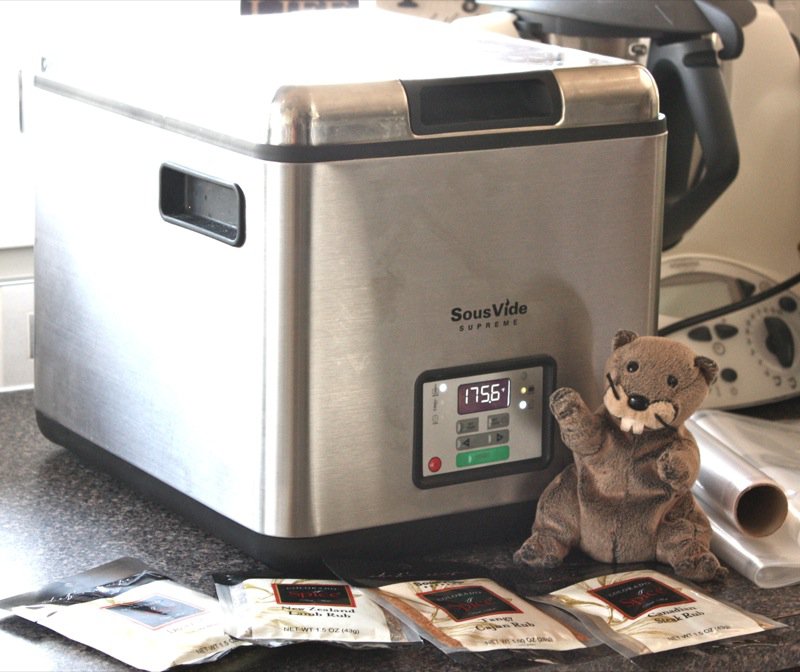
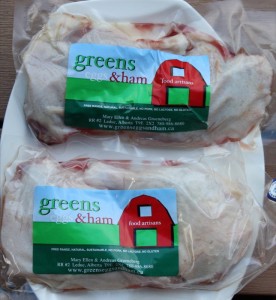
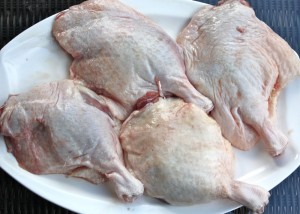
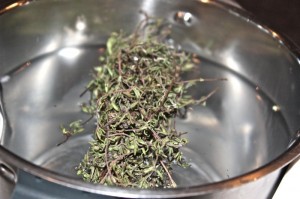
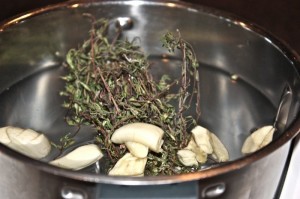
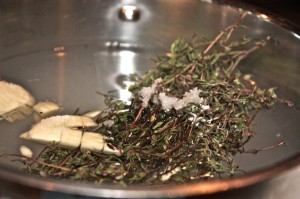
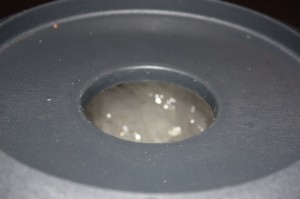
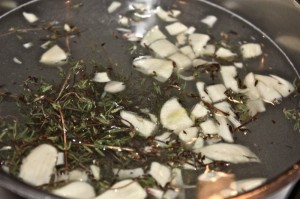
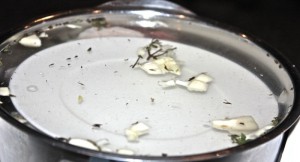
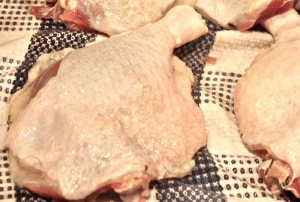
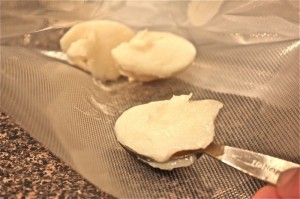
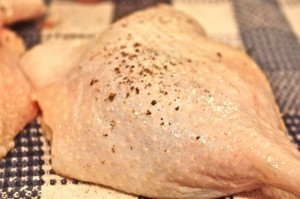
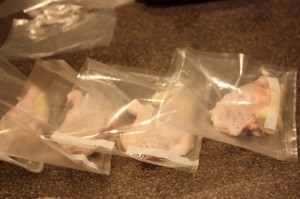
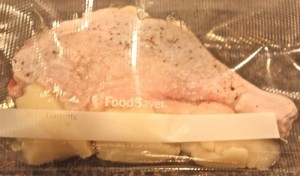
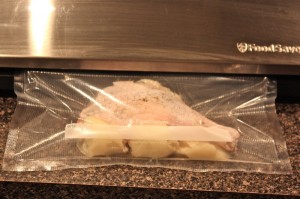
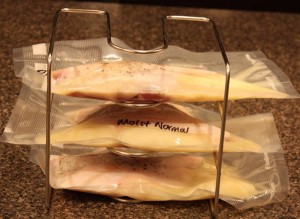
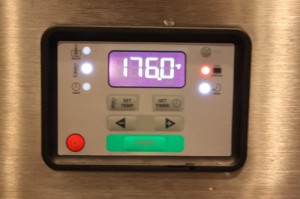
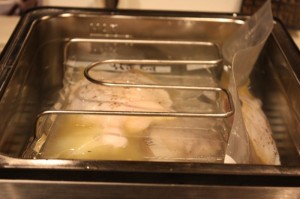
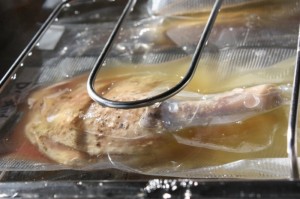

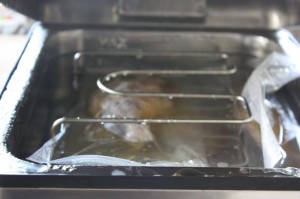
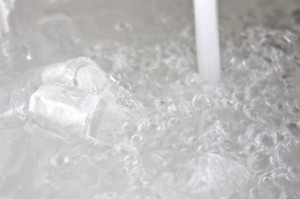
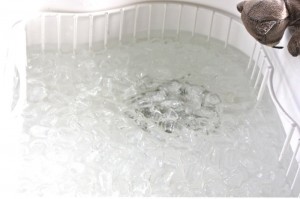
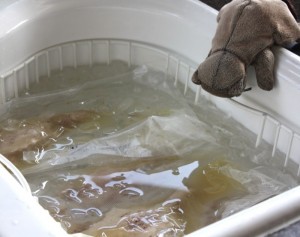
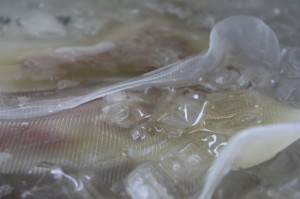
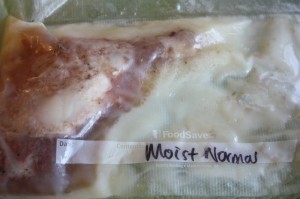
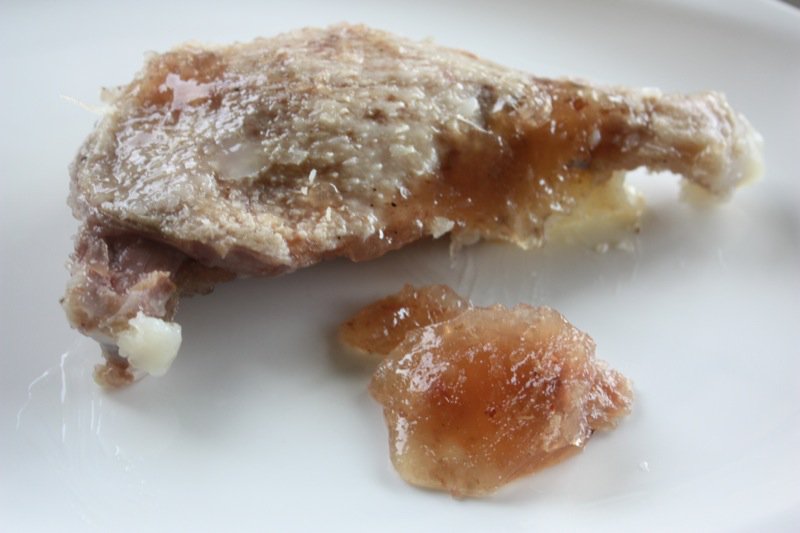
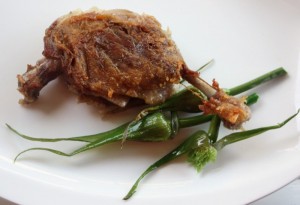
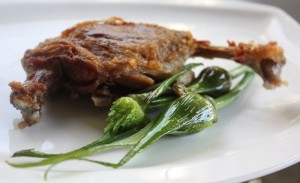
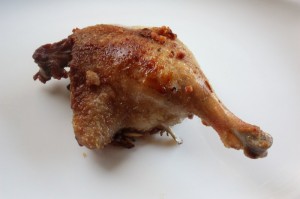
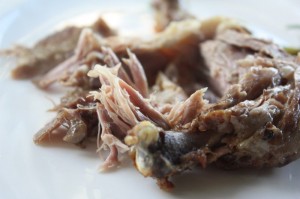
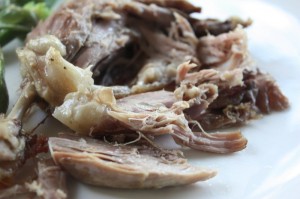
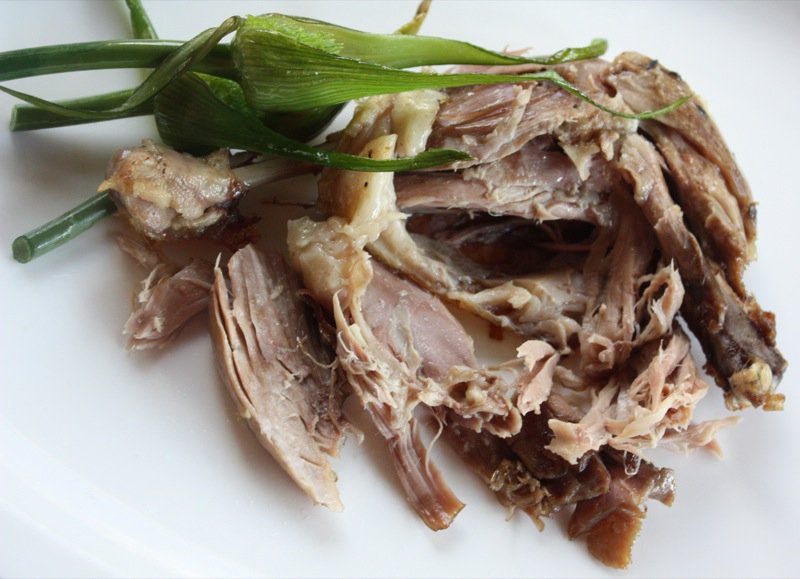
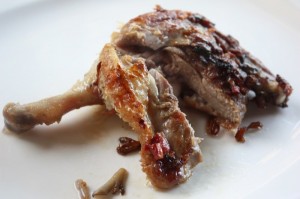
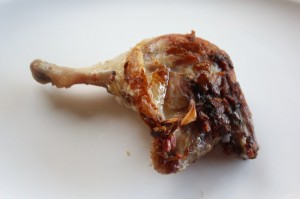
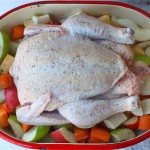
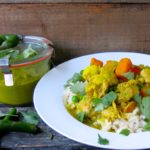
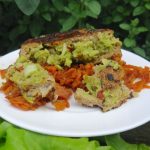
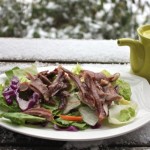
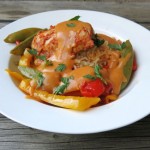
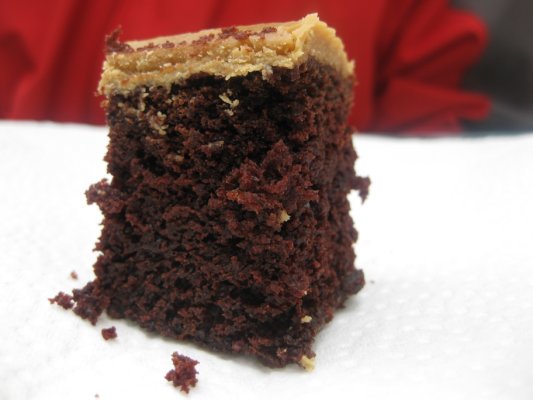



I hope Beavie didn’t fall in! Although… he did need a bath the last time we met.
how wonderful you get to test run such a great machine for two weeks, I know we will be in for some delish recipes, I love the duck confit and also enjoy the step by step photos, letting us enjoy with you in the excitement..
sweetlife
This is something new to me Valerie so I found this a very interesting and informative post. I look forward to some more comparative reviews.
Hi Valerie and Beavie!
You certainly have done your research. The duck looks absolutely fabulous. I’m looking forward to more of your work. I’m also enjoying your wonderful step-by-step photography and the way you describe what you do. It’s brillilant.
(P.S. I loved the Richard Bertinet lesson and wish I could do it as well!!!!!!!!!!!!
An educational and delicious post, thanks for going in-depth. My one concern is the lengthy cooking times involved with sous-vide…how much electricity is spent when operating the machine?
Great question, Peter. It is plugged into a 110 volt plug in, and I would think very little energy is used. My greater concern is with the plastic bags. That has been haunting me since the get-go… but, I will evaluate all in my final review.
This is a completely new way of cooking….3hrs?? wow…that would cost a fortune in Germany.
The meat does look very tender and juicy.
Wow, this looks awesome! I haven’t sous vide-ed before, and with this comprehensive lesson I may have the cajones to try it!
Duck confit, mmmmmm.
I am slightly embarrassed to say that I have never heard of sous vide cooking before. You know what though? I always learn so much from your posts, and love looking at your pictures. I’ve got to say, I am fascinated by the gadgets in your kitchen, and I love your cooking style. Beavie is one lucky critter, and Vanja is definitely blessed. Bet all the other hubbies are so jealous!
*kisses* HH
Wow–great photography Val. I’d heard of sous vide cooking before, but only in books and such. Your duck confit looks incredible…like the meat just pulls off effortlessly! (Sorry, I don’t know much about meat. Please excuse my rather useless comments about cooked animals…)
I’m glad you’re having fun. It all seems really complex and mysterious to me–kind of like a science experiment, except with food!
🙂 aletheia
Wow, wow! You are so lucky to get the sous vide machine to experiment with! I’m totally jealous! The duck confit looks incredible, very cool!
Lucky duck! You get to try sous vide. I love confit of duck and made it once. Now I am looking for some local ducks so I can make more. Looks lovely.
Hello,
I’m glad you liked my recipe for confit-style sous vide duck legs!
If you ever have any questions about sous vide cooking, feel free to email me.
Very best wishes,
Douglas
I am so honored that you have commented here, Douglas! Your research is stellar and so incredibly impressive! I learned so much from reading it and appreciate your offer to assist with answering questions! How did I do for my first time? I hope I included the critical information that was necessary for a beginning post. As a beginner myself, it is truly difficult to be sure.
🙂
Valerie
Oh the famous water bath………….I’ve been watching a series on the BBC – Great British Menu and they waterbath everything (and dehydrate a lot too)…..Or should I say sous vide. Superb
That’s serious cooking dedication when you go and buy a sous vide machine. I’m impressed, but will be totally in awe if you meant you are doing the key lime pie sous vide.
That’s what I meant, Joan! We are trying to do it “sous vide”! It will be a blast, won’t it? And, I didn’t buy the machine. I am trying it out and reviewing it for two weeks. I am very excited to have this opportunity! If you have any wild ideas, throw them at me. I will try!
🙂
Valerie
Oh this reminds me that I was supposed to send you that link I was telling about where I first hears of the sous vide cooking method. This is quite an interesting method indeed. I can’t wait to read your post after you interview the health inspector. I’m really interested as to what he has to say about this method of cooking. Your duck looks so crispy, flavorful and delicious. Your hubby is a lucky man to have a wife who knows how to cook so many wonderful meals and who is not afraid to experiment. I will email you the link to that blog as soon as I find it again. I love learning new things everytime I read one of your posts.
Impressive! This is a completely new method of cooking for me. totally fascinating. The confit looks awesome.
Mimi
Very interesting post. I have never seen this method of cooking before. It’ll be interesting to see if this catches on.
I am so impressed that you made duck confit!! sous vide!!! If my husband saw what you were doing, he would be really jealous because he wants a sous vide device so badly. He actually tried to make one (with minimal success). Are you sure you have to give it back after two weeks? 😉 Your duck looks so delicious!
Oh, and I definitely giggled at the picture of Beavie diving in the bath, hehe 🙂
I don’t know if I can visit your site anymore Val – even if you are only testing the machine, I am still suffering from gadget envy. First the thermomix and now this? Lucky lucky gal!
Valerie
This was a very interesting and informative post; thanks so much for enlightening us poor simple souls who still cook the traditional way! I had heard of “sous vide” cooking but figured it would remain the domain of sophisticated French chefs forever; it is nice to see that all of these techniques are being made now to reach the general public; you say your hubby did not really see the difference? Is the difference subtle or glaring? I will reread your post to try and extrapolate. Am definitely interested though.
Never thought in a million years I could make duck confit at home like this.
Joumana,
He didn’t find a difference in the flavour – which really surprised me. To me, the difference – from the brining – was significant. He was incredibly impressed by the texture. Butter tender. He did add – after the post was published and he read what I wrote, that my tradtional duck confit had a depth of flavour he felt this on lacked. So, that was it for me. I am going to compare the two of them in a new post. And…. having some distinguished palates would really help with the tastings. I don’t mean Vanja’s palate is not distinguished. It is. As is mine. And different from each others. I would like a wider sample.
🙂
Valerie
Wow! I have never heard of this before.
Thanks for the info and insight.
I will be interested to see what else you experiment with
Hey Valerie, that machine is neat. I used to see those (or ones like them) in people’s kitchens in Spain. I’m glad you had a good first experience with yours. The meat looks tender and delicious-like sous vide should!
Stella,
Are you talking about the Thermomix, or the Sous Vide Supreme? The Thermomix is all over Spain. The Sous Vide Supreme was just released in the US and Europe for the first time last fall. It is a very new home appliance.
🙂
Valerie
This post is fascinating. I don’t eat meat but have always wondered how this method of cooking worked. I’m so pleased you were able to experience this at Fat Duck and then recreate it at home. Very educational!
I’m intrigued. I have yet to explore sous vide cooking. The end result sure looks fab.
I am so impressed, I can’t tell you!! The duck looks magnificent though I doubt I will be attempting such an involved and specialised way of cooking anytime soon! Thank you for a fabuloulsy informative and educational post!!
Sous vide is the new black!
Indeed sous vide is the new black. I’ve been hearing about it everywhere since last year. This is a very informative post. A sous vide machine is not in my future but I certainly look forward to your experiences with it.
I have yet to dabble in sous vide (I cannot wait to..what’s taken me so long?) but tjose scallops, along with that key lime pie have my mouth watering like Niagara Falls! Your posts are always so delicious and beautiful. I’m so glad I ‘met’ you and your blog 🙂
What a sweet comment, Lisa! Thank you so much – and I feel the very same way!
🙂
Valerie
Yikes..how could I leave out the duck confit??? HEAVENLY!!